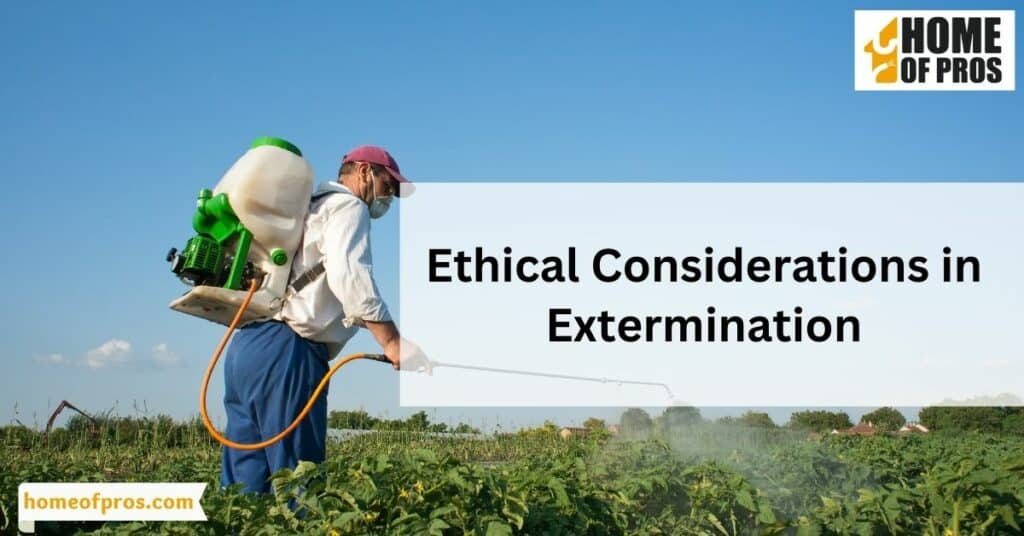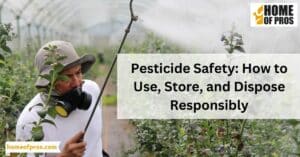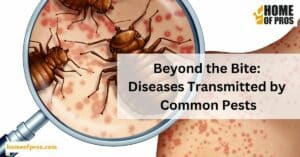Extermination, whether targeting pests or invasive species, demands careful ethical deliberation. We must weigh the necessity of controlling populations against the suffering inflicted, and ensure that methods are humane and environmentally responsible. Striking this balance challenges us to consider the intrinsic value of all life and the long-term impact of our actions.
Extermination, often essential for health and ecological balance, doesn’t come without moral dilemmas. While managing certain populations can be crucial, we must ask: Are our methods causing undue harm or suffering? Addressing these ethical concerns ensures our choices are not only necessary but also compassionate.

The Necessity vs. Compassion Debate
In the realm of extermination, two compelling arguments often emerge the undeniable necessity for certain situations and the call for compassion towards all beings. Striking a balance between the two is a matter of great debate.
Table:
| Necessity for Extermination | Argument for Compassion |
|---|---|
| Disease prevention: Control vectors like mosquitoes | All beings have intrinsic value, even if seen as nuisances |
| Protect agricultural yields from pests | Seek alternatives to killing, like humane relocation |
| Maintain ecological balance by managing invasive species | Consider the broader environmental implications of extermination |
While the need for extermination in specific scenarios can’t be overlooked, it’s crucial to approach it with a sense of responsibility and empathy. By understanding both sides of this debate, we can move towards more informed and compassionate decisions.
Humane Methods
In the world of extermination, there’s an increasing emphasis on not just the ‘how’ but also the ‘why’. As societies progress and evolve, so does the discourse on the ethics of extermination. Are we, in our efforts to control pests and invasive species, also ensuring that we act with humanity and compassion?

- Common Extermination Methods: The extermination industry has historically leaned on methods such as traps, poisons, and sprays. These traditional tactics, while effective, have been a mainstay because of their ease of use and widespread availability.
- Impact and Suffering: It’s essential to recognize that many of these common methods can lead to prolonged suffering for the affected species. Moreover, some are indiscriminate in nature, which means they might impact not just the target pests but also other unintended creatures.
- Advancements in Humane Techniques: The silver lining in extermination practices is the rise of more humane techniques. There are now innovations like catch-and-release traps that aim to control without killing, pheromone disruptors that prevent reproduction, and biological controls that leverage natural predators.
As we tread the path of extermination, it’s crucial to continually assess our steps. Each choice we make resonates with our values and understanding of coexistence. By championing humane methods, we not only showcase progress in techniques but also in our collective consciousness.
Environmental Impact and Long-term Consequences
The narrative around extermination isn’t just confined to the immediate act, but also its ripple effects on our environment. When we intervene in nature’s balance, even with good intentions, the ramifications can stretch far beyond our initial expectations.
- Disruption of Local Ecosystems: At the heart of any ecosystem is a delicate balance between its inhabitants, each playing a unique role in maintaining equilibrium. Extermination, especially if done indiscriminately, can disrupt this balance. For instance, removing a particular pest might lead to an overgrowth of the plants they fed on, which can then have cascading effects on other species dependent on that ecosystem.
- Unintended Consequences: Nature has its way of filling voids. When one species is exterminated or significantly reduced, it can inadvertently pave the way for another, potentially more harmful species to dominate. This phenomenon, termed “competitive release,” showcases how an intervention can sometimes worsen the problem, as the new dominant species might be harder to control or have more detrimental impacts.
- Predicting Impacts and Making Informed Decisions: Before embarking on any extermination endeavor, it’s paramount to understand potential long-term consequences. Employing ecological modeling and predictive analysis can offer insights into how an ecosystem might respond to extermination. Being forearmed with this knowledge ensures that the decisions made are not only effective but also responsible.
Extermination, while sometimes necessary, is a decision fraught with long-term implications. As stewards of our planet, it’s incumbent upon us to approach such choices with a comprehensive understanding of their effects. By being proactive and well-informed, we can aim for solutions that are both beneficial and environmentally respectful.

Ethical Perspectives from Different Cultures
The lens through which extermination is viewed is not universal, but rather tinted by the cultural and religious beliefs of different societies. A practice deemed acceptable in one culture might be frowned upon or forbidden in another, illustrating the rich tapestry of human values and perspectives.
1. Cultural and Religious Views on Extermination
Many religions and cultural traditions possess specific doctrines or beliefs about the treatment of other living beings. For example, Jainism, a religion originating from India, emphasizes non-violence (ahimsa) to all living things, including even the smallest of insects. Conversely, in some agricultural societies, extermination might be seen as a necessary act for survival, irrespective of spiritual beliefs.
2. Variation in Extermination Ethics Based on Societal Norms
Societal values, often shaped by historical, geographical, and socio-economic factors, play a crucial role in extermination ethics. For instance, while a metropolitan city battling disease might prioritize public health and see extermination as vital, indigenous tribes might employ more harmonious approaches, viewing pests as part of the natural cycle.

3. Unique Cultural Practices and Beliefs
The Balinese Subak system in Indonesia is an example of a unique cultural approach to pest control. Rather than resorting to pesticides, this system, deeply rooted in Balinese Hindu beliefs, relies on coordinated water management and temple rituals to control pests in rice paddies. Another example is Native American tribes that often incorporate rituals, prayers, or ceremonies before hunting or gathering, showcasing respect and gratitude to nature.
Ethical perspectives on extermination are as diverse as the cultures and religions that birth them. Understanding these varied viewpoints not only offers a richer perspective on global ethics but also paves the way for more holistic and respectful solutions. It’s a testament to the depth and diversity of human thought and our intricate relationship with the world around us.

Conclusion
The discourse on extermination stretches far beyond the act itself, weaving into the intricate threads of ethics, environment, and cultural values. As we’ve journeyed through different facets of this topic, it becomes abundantly clear that extermination decisions aren’t black and white. They are deeply influenced by cultural perspectives, the urgent needs of societies, and the long-term implications on ecosystems.












